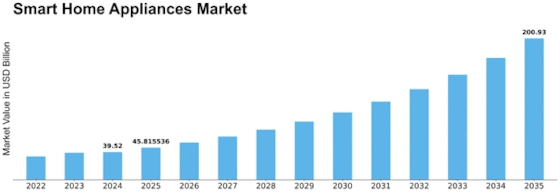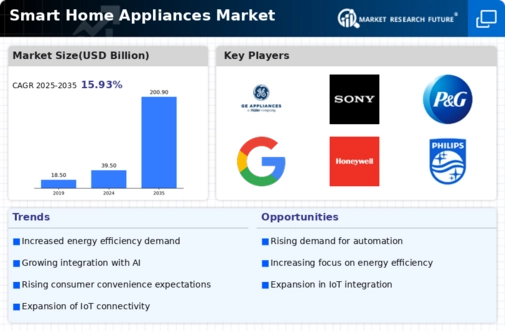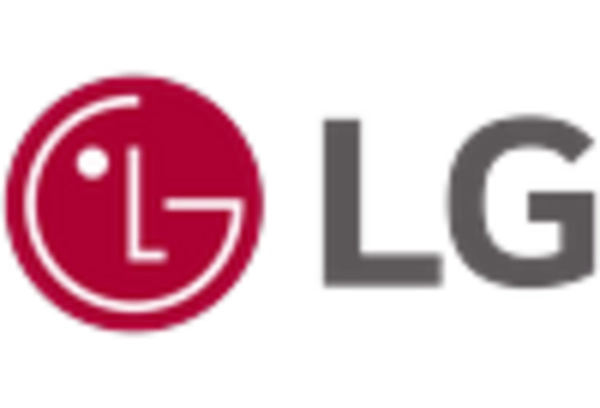Smart Home Appliances Size
Smart Home Appliances Market Growth Projections and Opportunities
Different factors affect the smart home device market in many ways, including its growth, demand, and general growth path. One important thing is how quickly technology is changing. The Internet of Things (IoT), artificial intelligence (AI), and machine learning are some of the top advanced technologies that have enhanced smart home appliances. Everyday things become more helpful when these technologies are added to them. This makes it possible for features like automation, flexible learning, and remote control. A lot of what changes in the market for smart home goods is how well and how often people know about them. More people are buying smart and connected goods because they know how useful they are. People want to make their lives easier, save money on energy costs, and have better experiences, so they look into and use these new tools in their homes. Cost and ease of access are two main factors that determine how many smart home goods people buy. Folks first thought these gadgets were expensive, high-end things. There are, however, times when making things costs less because of economies of scale and better ways to make things. This makes prices lower, so more people can buy smart home products. Affordability is very important for getting a lot of people to use something and for the market to grow. Government rules and subsidies have a big impact on the market for smart home products. Policies that encourage practices that are good for the environment, save energy, and use of smart technology help the industry grow. Giving customers benefits, like tax credits or refunds, to buy energy-efficient tools makes them more likely to make smart choices. Competition in the market is a big part of what drives innovation and shapes the whole environment of smart home appliances. New players entering the global industry often leads to new features, cheaper options and more user experiences. The growing focus on protecting the environment is having an effect on the market for smart home products. People are looking for products that use less energy and encourage better living because they care more about the environment. In response, companies make smart products with eco-friendly features, energy-saving technologies, and materials that won't harm the earth. This affects what people buy and fits with the bigger trend in society toward being more environmentally friendly.

















Leave a Comment